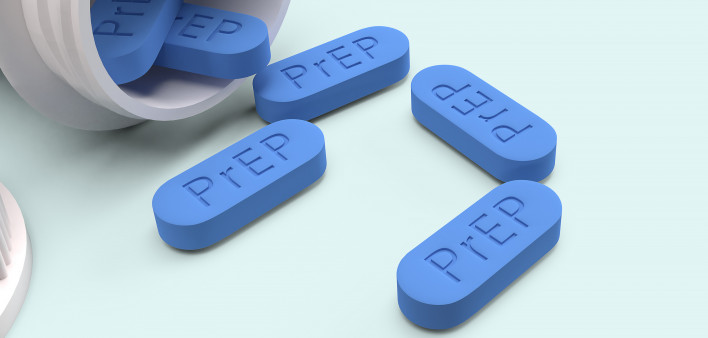People with insurance but high prescription copays were four times more likely not to pick up their prescriptions for HIV pre-exposure prophylaxis (PrEP) than those with lower out-of-pocket costs, according to data published in Clinical Infectious Diseases. That’s higher even than the rate of PrEP abandonment by people paying for the pills with cash.
Since last year, people prescribed PrEP aren’t supposed to have to pay anything for the pills or services surrounding them. President Joe Biden’s 2023 budget calls for a $9.8 billion investment in PrEP and other HIV care.
Ya-Lin Huang, PhD, a health scientist at the Centers for Disease Control and Prevention, and colleagues reviewed the IQVIA Real World Data—Longitudinal Prescriptions database for PrEP prescriptions ordered, picked up and paid for. The database accounts for 92% of prescriptions ordered at retail pharmacies like Walgreens and between 60% and 86% of those sent from mail-order pharmacies. It includes prescriptions covered by Medicaid, Medicare and private insurance. The researchers calculated how many people failed to pick up their PrEP prescriptions for each of the four calendar years from 2016 to 2019.
Overall, about 8% of people failed to pick up PrEP prescriptions that had been called in for them in each of the years, with a small tick upward in 2019, when 9% didn’t pick up their prescriptions.
In 2019, for instance, 241,965 people received a prescription for HIV prevention pills, 9% of whom did not pick up their prescriptions. When the researchers looked deeper, they saw that people new to PrEP, women and young people all had higher rates of PrEP abandonment. Among people new to PrEP pills and women, no matter their familiarity with the prevention method, 13% abandoned their prescriptions. While 6% of white people didn’t pick up their pills, 8% of Black people left their pills behind. And 11% of people ages 16 to 24 and 14% of those ages 65 and up didn’t pick up their prescriptions.
This translated to new PrEP users being twice as likely to abandon prescriptions as repeat users. People over 65 were 91% more likely and women were 37% more likely to abandon their prescriptions. Black people were 20% more likely to abandon their medications at the pharmacy compared with white people.
Some of the explanation for this could lie in costs. People without insurance of any kind and those paying cash decided not to pick up their medications a full 65% of the time. Nearly one in three people (30%) who had insurance but had a prescription copay of $500 or more didn’t pick up their pills. And 14% of people using a drug assistance program from Gilead Science, the maker of the two approved PrEP pills (Truvada and Descovy), decided not to pick up their medications.
Cash payers were 3.5 times more likely to abandon their prescriptions than those with insurance. And people with insurance but high copays were even less likely to pick up their pills than people paying cash—four times more likely than those with adequate insurance. But people using copay assistance cards were 51% less likely to abandon their pills.
The study didn’t analyze by demographics which people were more likely to have no insurance or a high copay. But the findings conform with data presented at the Conference on Retroviruses and Opportunistic Infections 2022 showing that women earning less than 138% of the federal poverty level were less likely to continue on PrEP. The researchers also didn’t analyze whether there was any association between states without Medicaid expansion and cash payment.
But there was some hopeful news. People who went to a nurse practitioner or physician assistant were more likely to pick up their pills: 92% of those folks followed
through, compared with 91% of people treated by doctors. In addition, 94% of those covered by Medicare and Medicaid—the government’s public insurance programs for older, disabled or low-income Americans—pick up their pills, 12% increased odds compared to people with commercial insurance. And people in the South—where a majority of new HIV cases are occurring—were more likely to pick up their PrEP prescriptions than people in the Northeast.
“Given the disparate rates of abandonment observed in some patient groups, such as women, younger persons and Black persons, it is important to continue monitoring PrEP abandonment to better understand the impact of the [Affordable Care Act] provision for removing financial barriers and increasing access to PrEP,” wrote Huang and colleagues.
Click here to read the full study.
Click here to learn more about PrEP for HIV prevention and to read more news about racial disparities in HIV care and prevention.







Comments
Comments